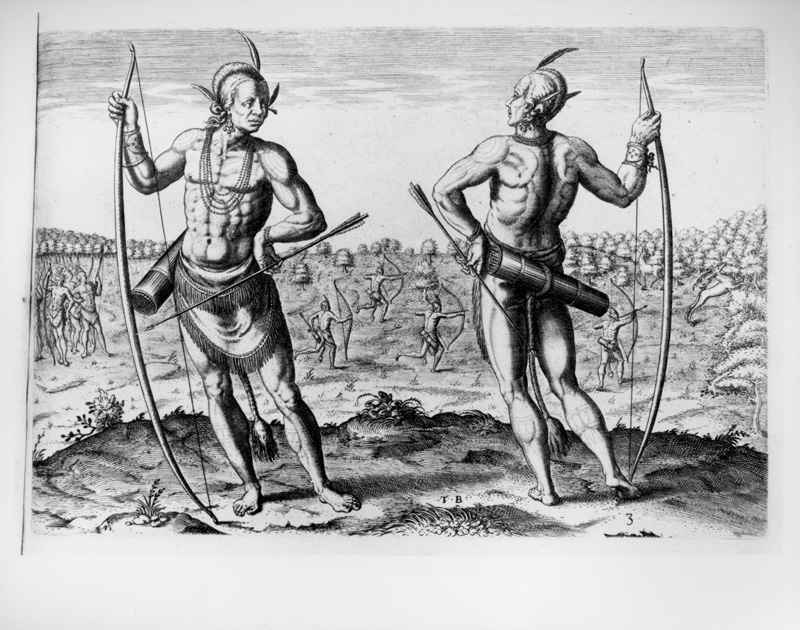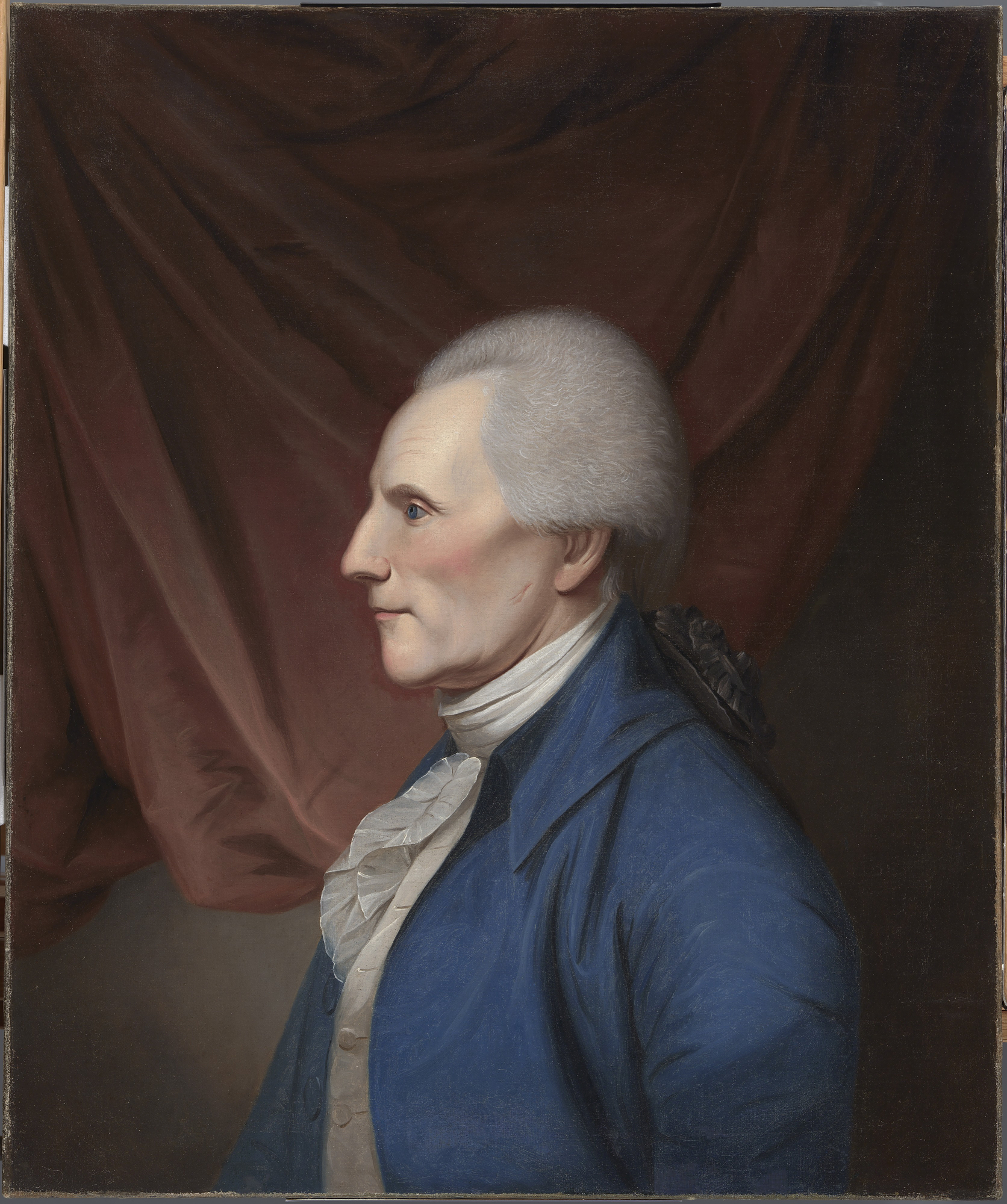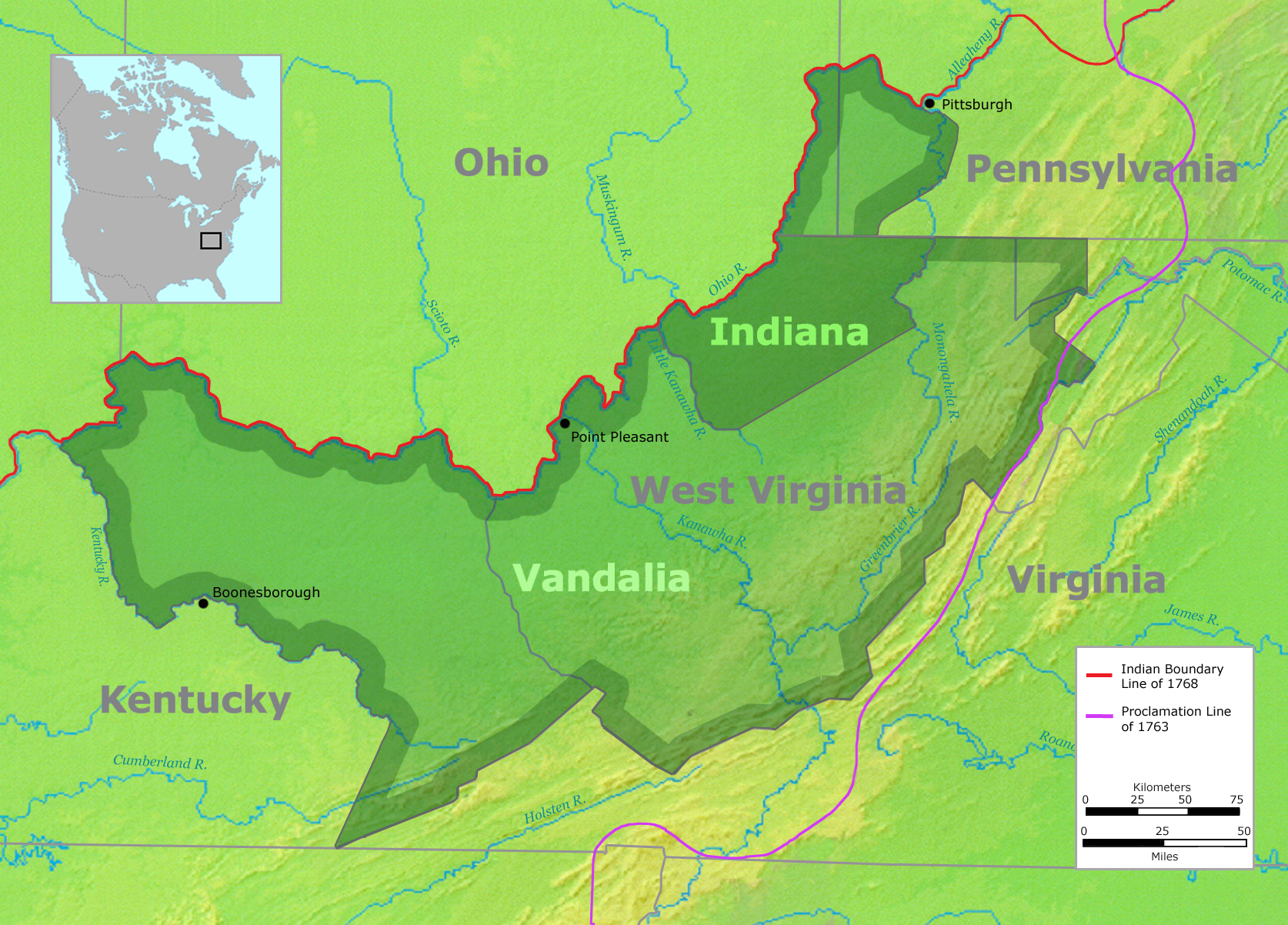|
Augusta Resolves
The Augusta Resolves was a statement adopted on February 22, 1775 by six representatives of Augusta County, Colony of Virginia, in the early stages of the American Revolution. The resolves expressed support for Congress' resistance to the Intolerable Acts, issued in 1774 by the British Parliament, and a commitment to risk 'lives and fortune' in preservation of natural rights. Background and drafting After Parliament passed the Coercive Acts, also known as the Intolerable Acts, to punish Massachusetts for the Boston Tea Party, the Virginia House of Burgesses proclaimed that June 1, 1774, would be a day of "fasting, humiliation, and prayer" as a show of solidarity with Boston. In response, Lord Dunmore, the royal governor of Virginia, dissolved the House of Burgesses. The burgesses reconvened at the Raleigh Tavern on May 27 and called for Virginia's counties to elect delegates to a special convention to meet in August. Thomas Lewis and Samuel McDowell were elected as Augusta Count ... [...More Info...] [...Related Items...] OR: [Wikipedia] [Google] [Baidu] |
Augusta County
Augusta County is a county in the Shenandoah Valley on the western edge of the Commonwealth of Virginia. The second-largest county of Virginia by total area, it completely surrounds the independent cities of Staunton and Waynesboro. Its county seat is Staunton, but most of the administrative services have offices in neighboring Verona. The county was created in 1738 from part of Orange County and was named after Princess Augusta of Saxe-Gotha. It was originally a huge area, but many of its parts were carved out to form other counties and several states until the current borders were finalized in 1790. As of the 2020 census, the county's population was 77,487. Along with Staunton and Waynesboro, it forms the Staunton–Waynesboro, VA Metropolitan Statistical Area. History Augusta County was formed in 1738 from Orange County, although, because few people lived there, the county government was not organized until 1745. It was named for Augusta of Saxe-Gotha, Princess o ... [...More Info...] [...Related Items...] OR: [Wikipedia] [Google] [Baidu] |
Waddell
Waddell may refer to: Places * Waddell, Arizona ** New Waddell Dam, on the Agua Fria River * Waddell Barnes Botanical Gardens, Macon, Georgia * Waddell Creek, a stream in California * E. E. Waddell Language Academy, Charlotte, North Carolina * Waddells Mill Pond Site, an archeological site in Florida * Waddell's Station, a historic site in Oklahoma Other uses * Waddell (surname), including a list of people with the name * Russell, Majors and Waddell, a partnership that operated the Pony Express * USS ''Waddell'' (DDG-24), a United States Navy vessel * Waddell and Reed Waddell & Reed Financial, Inc. was an American asset management and financial planning company founded in 1937 in Kansas City, Missouri. It was a publicly traded company from 1998 to 2021, and briefly had its headquarters in Overland Park, Kans ..., a mutual fund company * Waddell (Limited), owners of Dazed & Confused (magazine) * Waddell's signs, medical terminology related to back pain {{Disambig ... [...More Info...] [...Related Items...] OR: [Wikipedia] [Google] [Baidu] |
History Of Virginia
The written History of Virginia begins with documentation by the first Spanish explorers to reach the area in the 1500s, when it was occupied chiefly by Algonquian, Iroquoian, and Siouan peoples. In 1607, English colonization began in Virginia with Jamestown, which would become the first permanent English settlement in North America. The Virginia Company colony was looking for gold and spices, and land to grow crops, however they would find no fortunes in the area, and struggled to maintain a food supply. The famine during the harsh winter of 1609 forced the colonists to eat leather from their clothes and boots, and resort to cannibalism. In 1610, survivors would abandon Jamestown, although they returned after meeting a resupply convoy in the James River. Soon thereafter during the early 1600s, tobacco emerged as a profitable export. It was chiefly grown on plantations, using primarily slaves for the intensive hand labor involved. After 1662, the colony turned black slavery ... [...More Info...] [...Related Items...] OR: [Wikipedia] [Google] [Baidu] |
George Mathews (Georgia)
George Mathews (August 30, 1739 – August 30, 1812) was an American soldier and politician from the U.S. States of Virginia and Georgia. He was a brevet brigadier general in the Continental Army, the 20th and 24th Governor of Georgia, a U.S. Representative from Georgia, and the leading participant in the Patriot War of East Florida. Born in Augusta County in the Virginia Colony, Mathews was in early life a merchant and planter. As an officer in the colonial militia, he gained statewide fame for his role in the Battle of Point Pleasant of Dunmore's War. He was afterward elected to the House of Burgesses from Augusta County, but did not attend a session. On the outbreak of the American Revolutionary War, he served as colonel of the 9th Virginia Regiment in the Continental Army. He and his entire regiment were captured on October 4, 1777, in the Battle of Germantown. Mathews spent the next four years as a prisoner of war, including two years on a British prison ship. He ... [...More Info...] [...Related Items...] OR: [Wikipedia] [Google] [Baidu] |
Sampson Mathews
Sampson Mathews (c. 1737 – January 20, 1807) was an American merchant, soldier, and legislator in the colony (and later U.S. state) of Virginia. A son of John and Ann (Archer) Mathews, Mathews was an early merchant in the Shenandoah Valley region, where he and his brother George Mathews ran a series of stores across the valley with contacts extending to Atlantic trade networks. Mathews also took part in the Indian Wars and colonial revolutionary efforts. He was a member of the Augusta County Committee of Safety that drafted the Augusta Resolves, a precursor to the Declaration of Independence, and the Augusta Declaration, a precursor to the Articles of Confederation. Mathews was elected to the inaugural Virginia State Senate in 1776. During the American Revolution, he toured the western frontier to fortify the colonial border from Indian attacks, and oversaw sail manufacture for the Continental Navy's Virginia fleet. When turncoat Benedict Arnold enacted a surprise ra ... [...More Info...] [...Related Items...] OR: [Wikipedia] [Google] [Baidu] |
Alexander Balmain
Alexander Balmain (1740 – June 10, 1821) was an American Episcopal minister and teacher in Winchester, Virginia. He ministered Christ Episcopal Church, as well as serving as rector of Frederick Parish, for four decades, the longest of any rector in the parish. He was married to a cousin of President James Madison, whose marriage to Dolley Payne Todd he would also go on to consecrate. Originally from Scotland, and trained as a Presbyterian, Balmain traveled to Virginia to become teacher to the children of Richard Henry Lee. He was later ordained as a minister and served under the rector of Augusta Parish at Trinity Episcopal Church in Staunton. On the eve of the American Revolutionary War, he chaired the local Committee of Safety and drafted the Augusta Resolves. During the war, he served as a chaplain under Peter Muhlenberg. After the war, he settled in Winchester where he became rector of Frederick Parish, with William Meade as his understudy. Apart from his duties ... [...More Info...] [...Related Items...] OR: [Wikipedia] [Google] [Baidu] |
George Washington
George Washington (February 22, 1732, 1799) was an American military officer, statesman, and Founding Father who served as the first president of the United States from 1789 to 1797. Appointed by the Continental Congress as commander of the Continental Army, Washington led the Patriot forces to victory in the American Revolutionary War and served as the president of the Constitutional Convention of 1787, which created the Constitution of the United States and the American federal government. Washington has been called the " Father of his Country" for his manifold leadership in the formative days of the country. Washington's first public office was serving as the official surveyor of Culpeper County, Virginia, from 1749 to 1750. Subsequently, he received his first military training (as well as a command with the Virginia Regiment) during the French and Indian War. He was later elected to the Virginia House of Burgesses and was named a delegate to the Continental Con ... [...More Info...] [...Related Items...] OR: [Wikipedia] [Google] [Baidu] |
Second Continental Congress
The Second Continental Congress was a late-18th-century meeting of delegates from the Thirteen Colonies that united in support of the American Revolutionary War. The Congress was creating a new country it first named "United Colonies" and in 1776 renamed "United States of America." It convened in Philadelphia on May 10, 1775, with representatives from 12 of the colonies. This came shortly after the Battles of Lexington and Concord and was in succession to the First Continental Congress which met from September 5 to October 26, 1774. The Second Congress functioned as a ''de facto'' national government at the outset of the Revolutionary War by raising armies, directing strategy, appointing diplomats, and writing petitions such as the Declaration of the Causes and Necessity of Taking Up Arms and the Olive Branch Petition. All thirteen colonies were represented by the time the Congress adopted the Lee Resolution which declared independence from Britain on July 2, 1776, and the ... [...More Info...] [...Related Items...] OR: [Wikipedia] [Google] [Baidu] |
United States Declaration Of Independence
The United States Declaration of Independence, formally The unanimous Declaration of the thirteen States of America, is the pronouncement and founding document adopted by the Second Continental Congress meeting at Pennsylvania State House (later renamed Independence Hall) in Philadelphia, Pennsylvania, on July 4, 1776. Enacted during the American Revolution, the Declaration explains why the Thirteen Colonies at war with the Kingdom of Great Britain regarded themselves as thirteen independent sovereign states, no longer subject to British colonial rule. With the Declaration, these new states took a collective first step in forming the United States of America and, de facto, formalized the American Revolutionary War, which had been ongoing since April 1775. The Declaration of Independence was signed by 56 of America's Founding Fathers, congressional representatives from New Hampshire, Massachusetts Bay, Rhode Island and Providence Plantations, Connecticut, New York, New ... [...More Info...] [...Related Items...] OR: [Wikipedia] [Google] [Baidu] |
Fincastle Resolutions
The Fincastle Resolutions was a statement reportedly adopted on January 20, 1775, by fifteen elected representatives of Fincastle County, Virginia. Part of the political movement that became the American Revolution, the resolutions were addressed to Virginia's delegation at the First Continental Congress, and expressed support for Congress' resistance to the Intolerable Acts, issued in 1774 by the British Parliament. Background Other counties in Virginia had passed resolutions similar to the Fincastle Resolutions in 1774, such as the Fairfax Resolves, but the Fincastle Resolutions were the first adopted statement by the colonists which promised resistance to the death to the British crown to preserve political liberties. Throughout 1774, the Fincastle signatories had been fighting in Dunmore's War against the Shawnee to the west, and were not able to formally express their sentiments about the constitutional dispute until January 1775. The Fincastle representatives reportedly ... [...More Info...] [...Related Items...] OR: [Wikipedia] [Google] [Baidu] |
Dunmore's War
Lord Dunmore's War—or Dunmore's War—was a 1774 conflict between the Colony of Virginia and the Shawnee and Mingo American Indian nations. The Governor of Virginia during the conflict was John Murray, 4th Earl of Dunmore—Lord Dunmore. He asked the Virginia House of Burgesses to declare a state of war with the Indian nations and call out the militia. The conflict resulted from escalating violence between white settlers, who, in accordance with previous treaties, were exploring and moving into land south of the Ohio River (modern West Virginia, southwestern Pennsylvania, and Kentucky), and Native Americans, who had rights to hunt there. As a result of incursions and successive attacks by settlers upon Indian lands, provoking Indian war bands to retaliate, war was declared "to pacify the hostile Indian war bands". The war ended soon after Virginia's victory in the Battle of Point Pleasant on October 10, 1774. As a result of this victory, the Colony of Virginia took ... [...More Info...] [...Related Items...] OR: [Wikipedia] [Google] [Baidu] |
Virginia Gazette
''The Virginia Gazette'' is the local newspaper of Williamsburg, Virginia. Established in 1930, it is named for the historical ''Virginia Gazette'' published between 1736 and 1780. It is published twice a week in the broadsheet format. Historical papers There were actually three papers published in Williamsburg under the name ''The Virginia Gazette'' between 1736 and 1780. Together, these papers serve as an important record for Virginia's colonial history. The original ''Virginia Gazette'', the first newspaper ever published in Virginia, was established by William Parks, who printed the first four-page edition on August 6, 1736. Its motto was "Containing the freshest Advices, Foreign and Domestick." Three years earlier, Parks had founded ''The Maryland Gazette'' in Annapolis, Maryland. In 1743, Parks built a paper mill in Williamsburg; he purchased the raw material to create newsprint from Benjamin Franklin. The paper was published, successively, by William Parks (1736–1750), ... [...More Info...] [...Related Items...] OR: [Wikipedia] [Google] [Baidu] |




(cropped).jpg)

